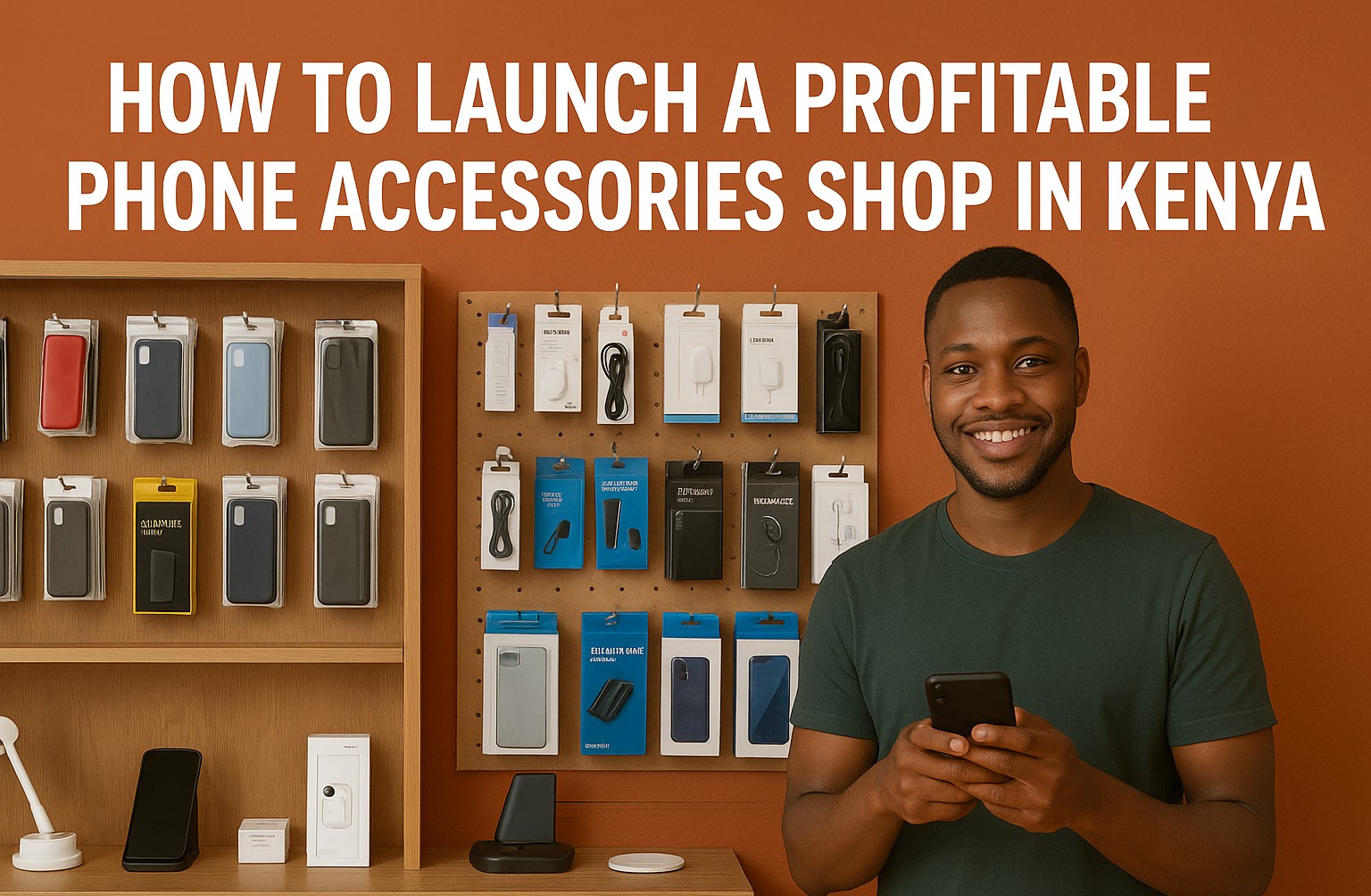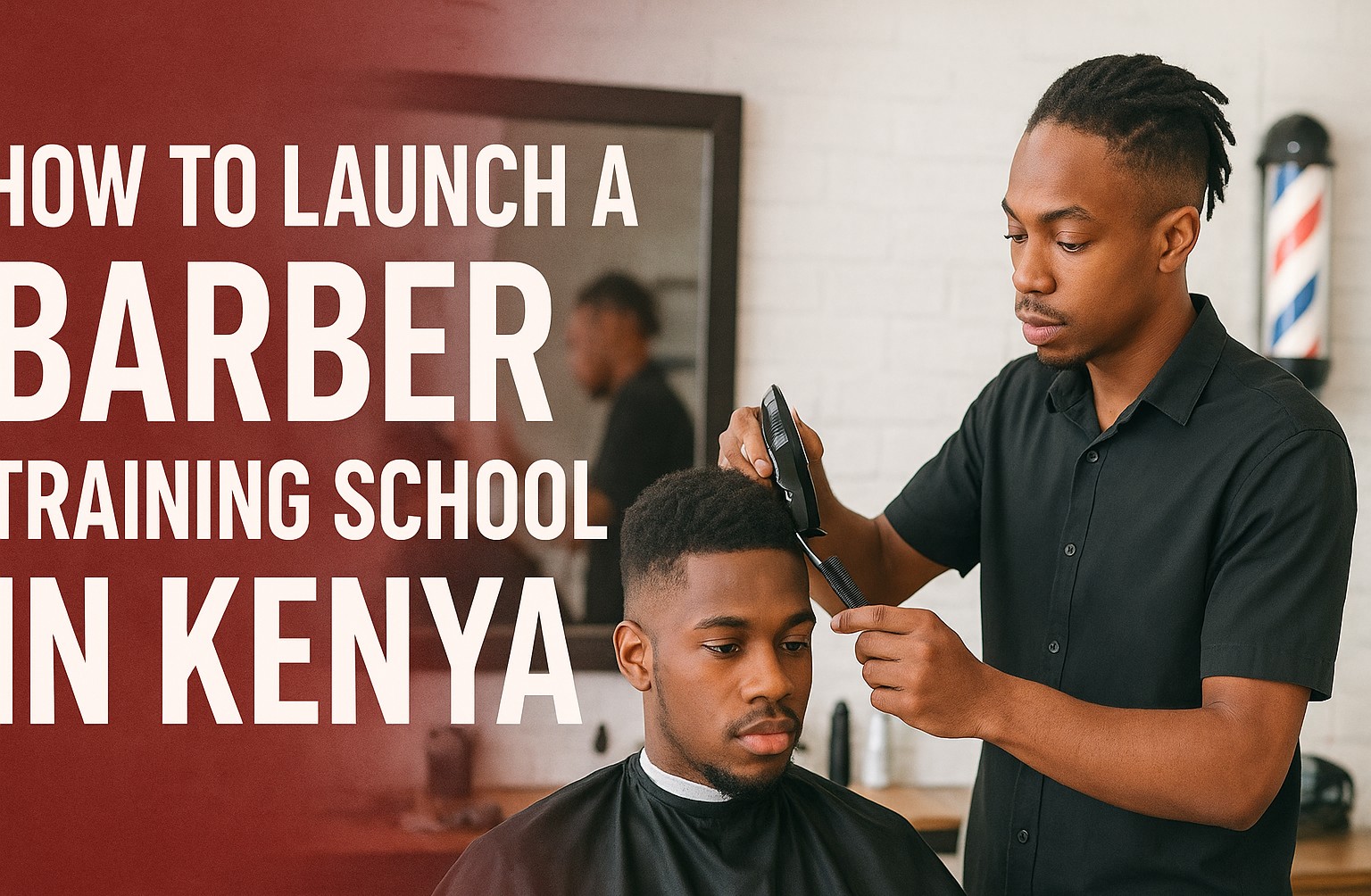

Titus Morebu
Author
How to Launch a Profitable Phone Accessories Shop in Kenya 📱
Want to start a phone accessories shop in Kenya? Learn step-by-step how to set up, source, market and grow your store for sustainable profits.
How to Launch a Profitable Phone Accessories Shop in Kenya 📱
Starting a phone accessories shop in Kenya is a smart move right now: smartphone usage keeps rising, consumers want stylish and protective gear, and entry costs are manageable. This guide will walk you through the key steps, challenges, and smart tactics to build a thriving business. Use it as your blueprint.
1. Why a Phone Accessories Shop Makes Sense in Kenya
- Growing smartphone penetration. More Kenyans (even in smaller towns) now own smartphones, increasing demand for cases, chargers, earbuds, and more.
- Frequent replacement cycle. Accessories like screen protectors and charging cables wear out or break often, driving repeat purchases.
- Low barrier to entry. You don’t need huge capital to begin—start with a lean inventory and scale.
- Opportunity for differentiation. You can niche (e.g. premium, rugged, eco-friendly, or custom designs) to stand out.
2. Validate Your Idea with Market Research
Know your customers
Segment potential buyers: students, professionals, youth, local businesses, or tourists. In urban centres like Nairobi and Mombasa, style and brand matter. In smaller towns, durability and pricing may be more important.
Survey existing shops and online sellers
Visit malls, kiosks, and informal markets. Check differences in quality, display, pricing, warranties, and services. Also review online shops—see what products are trending, how they list specs, and what feedback buyers give.
Trend & keyword research
Use tools (e.g. Google Trends, Ubersuggest) to see what accessories people search for (e.g. “wireless earbuds Kenya,” “iPhone 13 case Kenya,” “fast charging cable”). This helps you anticipate demand.
3. Define Your Shop Model & Niche
You don’t need to sell every accessory. Start by narrowing your niche and scale gradually.
- Physical store only: Ideal in high foot-traffic zones (mall, busy street, near mobile phone shops).
- Online-only store: Lower fixed costs; reach customers across Kenya via social media, e-commerce platforms, and mobile money payments.
- Hybrid (shop + online): Best of both worlds—walk-ins plus delivery or shipping to other towns.
Possible niche ideas:
- Premium / designer accessories
- Rugged / heavy-duty accessories for outdoor users
- Eco-friendly / biodegradable accessories
- Custom & personalized cases or branding
- After-sales services (repair, screen installation, audio tuning)
4. Legal & Administrative Setup
Business registration & permits
- Register your business name or company with the requisite Kenyan agencies.
- Obtain a KRA PIN and ensure tax compliance (VAT, withholding tax rules, etc.).
- Secure business permits from the county or municipal government.
Location & lease considerations
If opting for a physical shop, choose a spot with good visibility, foot traffic, security, and proximity to electronics or mobile phone hubs. Check lease terms, utilities, and signage permissions.
Insurance & safety
Insure your stock against fire, theft or damage. Also ensure electric safety (wiring, surge protection) for demo units and displays.
5. Sourcing Quality Inventory
Local markets in Kenya
Markets like Kamukunji, Gikomba, Nyamakima and vendors in Nairobi deal in wholesale phone accessories. You can find cables, cases, adapters, etc. Buying locally may reduce shipping delays but requires diligent quality checks.
Importing & international suppliers
Use platforms like Alibaba, Global Sources, or trade fairs to find manufacturers. Order samples first. Negotiate MOQs (minimum order quantities) and shipping (FOB / CIF). Remember to factor in import duty, VAT, customs handling.
Private labeling and packaging
As your volume grows, negotiate branding of accessories (your logo on packaging, custom colors). Unique packaging can boost perceived value.
Dropshipping or consignment
If you wish to reduce inventory risk, explore dropshipping or consignment with suppliers, though margins may be lower and lead times longer.
6. Inventory Strategy & Pricing
Start lean & test with best-sellers
Begin with fast-moving items: phone cases, charging cables (USB-C, Lightning), power banks, screen protectors, earphones. Monitor which SKUs perform and expand accordingly.
Tiered pricing approach
Have multiple pricing tiers (low, mid, high premium) to catch different buyer segments. Use bundle discounts (case + protector, cable + adapter) to increase average order value.
Stock control & reorder points
Track inventory levels and lead times. Set reorder thresholds to avoid stockouts. Use simple inventory software or even spreadsheets to manage this.
7. Store Layout, Display & Customer Experience
Effective display & organization
Use clear signage, lamps, backlit displays, glass counters, and arrange by brand, phone model, or accessory type. Clean, structured displays attract trust.
Interactive demo zones
Have a small demo station where customers can test earbuds, portable speakers, or wireless chargers. This helps conversion.
Customer care & warranty policy
Offer clear return, exchange, or warranty period. Stick to your policies genuinely to gain trust and repeat business.
8. Marketing & Sales Channels
Digital presence
Build a simple but powerful website (WordPress + WooCommerce, Shopify, or local platforms). Optimize for mobile use and payment methods like M-Pesa, Paybill, Airtel Money.
Social media marketing
Use Instagram, Facebook, TikTok to showcase new arrivals, “unboxing” videos, user reviews, and discount promos. Leverage hashtags like #KenyaTech, #PhoneAccessoriesKE.
Online marketplaces & classifieds
List your stock on platforms such as Jumia, Masoko, OLX, or local classified sites. This widens reach and builds credibility.
Local promotions & partnerships
Partner with phone repair shops, mobile stores, or computer shops to cross-sell. Give discount vouchers, flyer drops, or bundle offers.
Referral & loyalty program
Offer incentives to customers who refer friends. A points or discount system encourages repeat purchases.
9. Logistics, Shipping & Fulfillment
Delivery options
Partner with courier services (e.g. Sendy, G4S, local bike couriers) for same-day or next-day delivery. For distant customers, use cost-effective parcel services.
Packaging & handling
Use bubble wrap, boxes, tamper-evident seals, and clear labeling. Charge or absorb shipping costs strategically (free shipping threshold, flat rate, etc.).
Inventory in multiple locations
As you grow, you may stock items in different towns/warehouses to reduce delivery times and shipping cost.
10. Financials & Projections
Estimate startup / working capital
Costs include first inventory, shop setup (shelves, counters, lighting), signage, lease deposit, website, marketing, staff, licenses. Aim to have at least 3–6 months of working capital as buffer.
Gross margin & pricing strategy
Target at least 30–50% markup on cost (or higher depending on luxury items). Include overhead (rent, utilities, staff) when setting retail prices.
Break-even & profit forecasts
Build a simple model: how many units per day you need to sell to cover fixed costs, and project revenue growth. Revisit monthly to adjust.
11. Common Challenges & How to Overcome Them
- Counterfeit or low-quality stock: Test all items, maintain good supplier relations, and reject poor batches.
- Supply delays / import issues: Keep safety stock, diversify suppliers, and anticipate customs holdups.
- Competition undercutting: Focus on value, brand, service, and bundling rather than pure price war.
- Changing tech & models: Stay updated—release accessories for new models, phase out obsolete ones.
- Cash flow crunch: Avoid overextending on inventory; negotiate supplier credit when possible.
12. Scaling & Growth Opportunities
Add new product lines
Expand into smart wearables (smartwatches, fitness bands), phone repair kits, drones, or mobile gadgets.
Train salespersons, open branches in other towns, or franchise your concept.
Wholesale or B2B sales
Sell to smaller kiosks or mobile shops as a supplier or distributor.
Export / Pan-East Africa sales
Once your brand is credible, explore supplying Kenya’s neighbors—Uganda, Rwanda, Tanzania—especially via online channels.
13. SEO & Content Strategy to Rank High (AI & Google Friendly)
Use keyword-rich, helpful content
Write blog posts like “best phone cases in Kenya 2025,” “how to choose a power bank,” or “iPhone accessories Nairobi.” Use internal linking to product pages.
Link out naturally to high-authority sites
When explaining technology (e.g. USB-C specs), link to authoritative sources like Wikipedia or standards bodies. Use descriptive anchor text, e.g. “learn about USB-C power delivery.”
Optimize metadata & images
- Page titles under 60 characters with targeted keywords (e.g. “Phone Accessories Shop Nairobi | Buy Cases & Chargers”)
- Meta descriptions ~150–160 characters summarizing the value
- Image alt tags like “Samsung S23 Ultra case Kenya” or “fast charging cable USB-C Kenya”
- Use schema markup (Product, Review, Breadcrumbs) for rich snippets
Encourage external backlinks
Guest-post on tech blogs, participate in Kenya tech forums, collaborate with influencers to get links to your site.
14. Launch & Test Phase
Before going full-scale, run a soft launch: open with limited stock, perhaps only online, gather feedback, test delivery, and refine operations. Use launch promos and social media hype.
15. Monitor & Adapt for Long-Term Success
- Review sales data weekly—identify best performers and laggards.
- Improve based on customer feedback.
- Rotate slow-moving stock with discounts or bundles.
- Stay updated with tech changes & new phone models.
- Reassess your marketing mix—scale what works, cut what doesn’t.
Conclusion
Building a successful phone accessories shop in Kenya is quite achievable with the right combination of market insight, disciplined sourcing, excellent customer experience, and smart marketing. Start lean, validate your model, focus on quality and trust, and scale carefully. With consistency, you’ll position yourself as a go-to store for mobile accessory buyers in Kenya.
Wishing you the best on your entrepreneurial journey! 🚀
Gallery

Related Articles
3 articles
How to Launch a Profitable Water Refill Station in Kenya 💧
Learn how to set up a water refill business in Kenya: from permits, equipment, water safety, and marketing to profit strategies — your step-by-step guide.

How to Launch a Successful Barber Training School in Kenya: A Step-by-Step Guide 💈
Start your own barber training school in Kenya with this actionable guide — from licensing and curriculum design to marketing and operations — and build a reputable institution.

Profitable Fish Farming Ideas in Kenya: Top Opportunities & Smart Strategies
Explore the most viable, high-return fish farming ventures in Kenya, with modern methods, species ideas, cost breakdowns and growth tips for success.